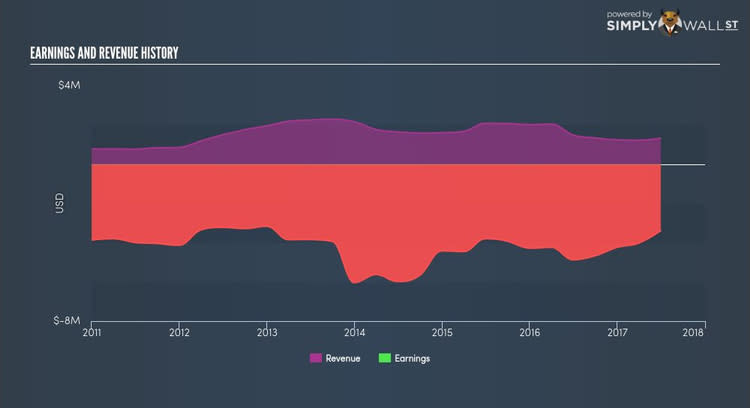Why You Need To Look At This Factor Before Buying Research Frontiers Incorporated (REFR)

If you are a shareholder in Research Frontiers Incorporated’s (NASDAQ:REFR), or are thinking about investing in the company, knowing how it contributes to the risk and reward profile of your portfolio is important. The beta measures REFR’s exposure to the wider market risk, which reflects changes in economic and political factors. Not every stock is exposed to the same level of market risk, and the market as a whole represents a beta value of one. A stock with a beta greater than one is expected to exhibit higher volatility resulting from market-wide shocks compared to one with a beta below one.
View our latest analysis for Research Frontiers
What is REFR’s market risk?
Research Frontiers’s beta of 0.12 indicates that the company is less volatile relative to the diversified market portfolio. This means that the change in REFR's value, whether it goes up or down, will be of a smaller degree than the change in value of the entire stock market index. Based on this beta value, REFR appears to be a stock that an investor with a high-beta portfolio would look for to reduce risk exposure to the market.
Does REFR's size and industry impact the expected beta?
With a market cap of USD $28.13M, REFR falls within the small-cap spectrum of stocks, which are found to experience higher relative risk compared to larger companies. Moreover, REFR’s industry, electronic equipment, instruments and components, is considered to be cyclical, which means it is more volatile than the market over the economic cycle. As a result, we should expect a high beta for the small-cap REFR but a low beta for the electronic equipment, instruments and components industry. This is an interesting conclusion, since both REFR’s size and industry indicates the stock should have a higher beta than it currently has. A potential driver of this variance can be a fundamental factor, which we will take a look at next.
Is REFR's cost structure indicative of a high beta?
An asset-heavy company tends to have a higher beta because the risk associated with running fixed assets during a downturn is highly expensive. I test REFR’s ratio of fixed assets to total assets in order to determine how high the risk is associated with this type of constraint. Considering fixed assets account for less than a third of the company's overall assets, REFR seems to have a smaller dependency on fixed costs to generate revenue. Thus, we can expect REFR to be more stable in the face of market movements, relative to its peers of similar size but with a higher portion of fixed assets on their books. Similarly, REFR’s beta value conveys the same message.
What this means for you:
Are you a shareholder? You could benefit from lower risk during times of economic decline by holding onto REFR. Its low fixed cost also means that, in terms of operating leverage, it is relatively flexible during times of economic downturns. Consider the stock in terms of your other portfolio holdings, and whether it is worth investing more into REFR.
Are you a potential investor? You should consider the stock in terms of your portfolio. It could be a valuable addition in times of an economic decline, due to its low fixed cost and low beta. However, I recommend you to also look at its fundamental factors as well, such as its current valuation and financial health to assess its investment thesis in further detail.
Beta is one aspect of your portfolio construction to consider when holding or entering into a stock. But it is certainly not the only factor. Take a look at our most recent infographic report on Research Frontiers for a more in-depth analysis of the stock to help you make a well-informed investment decision. But if you are not interested in Research Frontiers anymore, you can use our free platform to see my list of over 50 other stocks with a high growth potential.
To help readers see pass the short term volatility of the financial market, we aim to bring you a long-term focused research analysis purely driven by fundamental data. Note that our analysis does not factor in the latest price sensitive company announcements.
The author is an independent contributor and at the time of publication had no position in the stocks mentioned.

